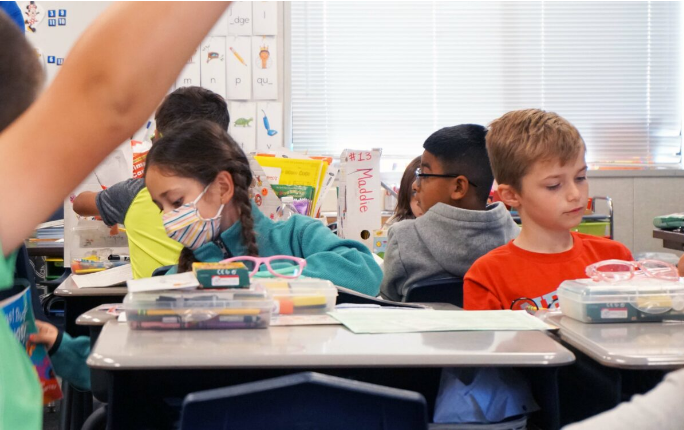Work-Based Learning in High School
A framework to ensure high school special education students develop the skills they need to join the workforce with confidence. As a special educator, I have one goal: to help students gain the skills and knowledge to be the best they can be in their adult lives. After teaching at the middle school level for over a decade, I decided to jump to high school and specialize in work-based learning to help facilitate my students’ lifelong success.
Work-based learning is the intersection of project-based learning and social and emotional learning, as it invites students to work on real-world tasks that will facilitate their ability to gain employment. The social and emotional learning component? Develop the soft or interpersonal skills necessary to thrive on the job.
It’s gratifying to help students secure their first job, fill out their first tax forms, open their first bank account and make their first purchases with their own money. I have seen countless students with special education services go from a negative self-image and disengagement from school to increased self-esteem and a new sense of success after accomplishing the task of landing a job. They begin to believe in themselves much more strongly when they realize their ability to participate in the workplace.
Also read: home drawing
Giving Students the Tools they Need
During my years as a job coordinator, I have learned many valuable approaches from experienced colleagues and personal research. Here are some helpful tools and strategies that can support student success.
Helping too Much Helps no One
Too often, students with special education services develop an over-reliance on adults at school. Many have grown up with additional support and may not realize they can accomplish countless tasks independently. Work-based learning is an opportunity for students to find their full potential alone. As a rule, I never say or do anything a student can say or do for themselves. For example, instead of calling an employer to see if she’s hiring, I train the student on how to make that phone call on her own. Reducing support and facilitating independence is critical to ensuring the success of lifelong learning, and work-based learning is the perfect platform for this.
Connect the Classroom With the Workplace
Work-based learning agendas should always include a classroom piece. Each state has different work-based learning programs, but many require a “career seminar” class to support student learning alongside on-the-job experiences. Professional seminars focus on explicit instruction in safety, labor laws, the job search process, career choice, and employability skills.
I run my career seminar class like I’m a manager at work. For example, students have a scheduled break in the middle of the course, and that’s the only time they can check their phones. Students log in when they enter the room by entering an assigned number on a Google form. The more we can practice the activities and habits they need at work, the better. This supports your ability to maintain long-term employment.
Share your Story
What was your rather job in high school? I guess you didn’t start your working life as a teacher. Share your work experience story with students, including the challenges and rewards. What was easy for you? Were there obstacles along the way, and how did you overcome them? How did you end up teaching, including your particular content area?
Invite students to share their own employment stories if they are already working. Conversations about successes at work can deepen relationships and motivate other students who may be inspired to join the workforce and enjoy the benefits it can bring.
Skills pay the Bills
When you approach your instruction through a work-based learning lens, these transferable skills will stay with students that all working adults need to learn and practice to keep a job. These include skills such as communication, conflict resolution, accepting constructive criticism, organization, and adaptability.
With such skills in mind, many classroom situations can become job readiness-oriented teachable moments, including unwanted behavioral choices. Instead of getting involved in power struggles with students, remind them that you have the same goal: their future success and employability. From this place, they can participate in problem-solving together. Continually return to their skills for work rather than school rules or policies that they may find arbitrary.
Do not Stop Believing
Cultivating hope, resilience, and a growth mindset in your students will significantly support their future attempts to join the workforce. The path to your dream career can be marred with obstacles and challenges. Students must believe in themselves and commit to persevering through setbacks to overcome them.
As educators, we can help foster their success by letting them know that we genuinely believe in them and their potential. In today’s job market, a job fits most students. Countless programs are available to create pathways for people with disabilities to obtain meaningful, gainful employment. Please share this with students, believe in their potential, and convey your commitment to developing their abilities.
I am very grateful to be the coordinator of work-based learning. Countless students have reconnected over the years to tell me their own success stories, beginning with their experiences in the high school work program. Whether a restaurant employee who rose to a manager, a child care assistant who grew to a teacher, or a trades apprentice who became a foreman, work-based learning planted the first seeds for success. Work-based learning is a precious opportunity to highlight students’ strengths and help them build on those strengths for lifelong rewards.

